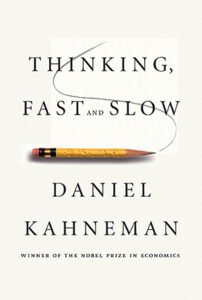|
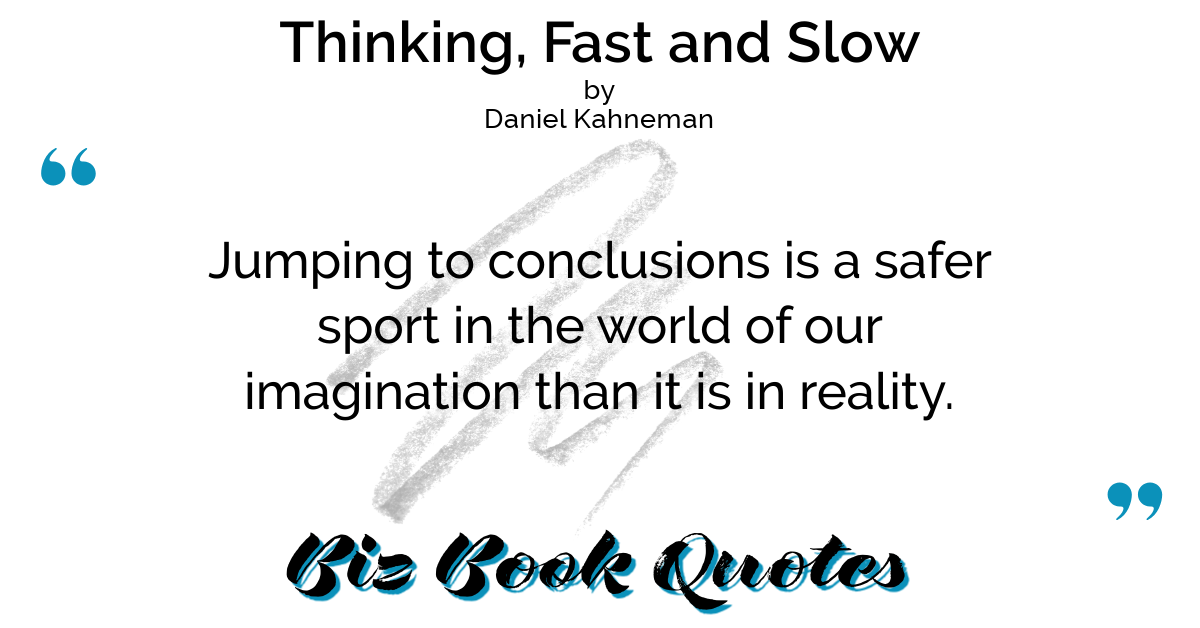
|
Thinking, Fast and Slow:
Jumping to conclusions is a safer sport in the world of our imagination than it is in reality.
|
118 |
|
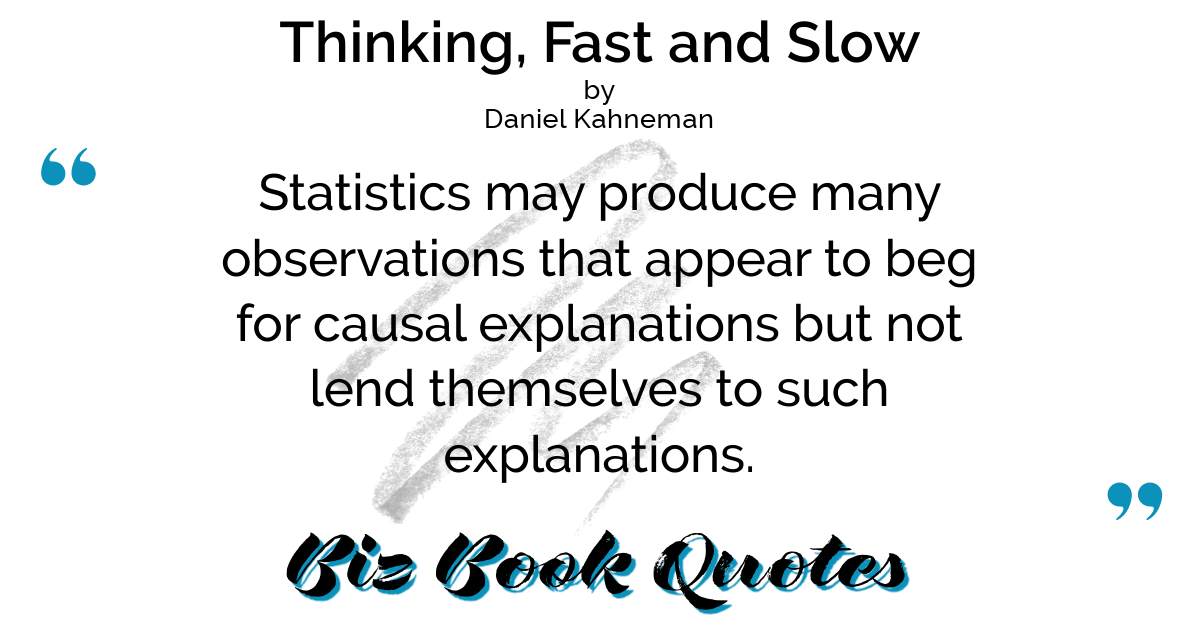
|
Thinking, Fast and Slow:
Statistics may produce many observations that appear to beg for causal explanations but not lend themselves to such explanations.
|
118 |
|
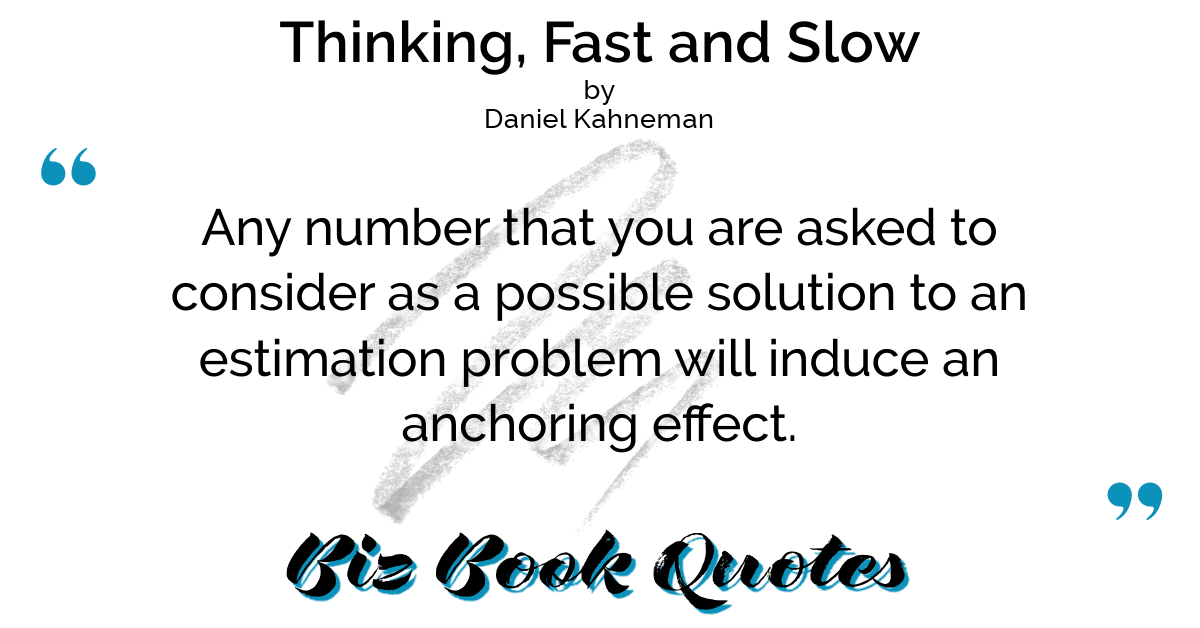
|
Thinking, Fast and Slow:
Any number that you are asked to consider as a possible solution to an estimation problem will induce an anchoring effect.
|
120 |
|
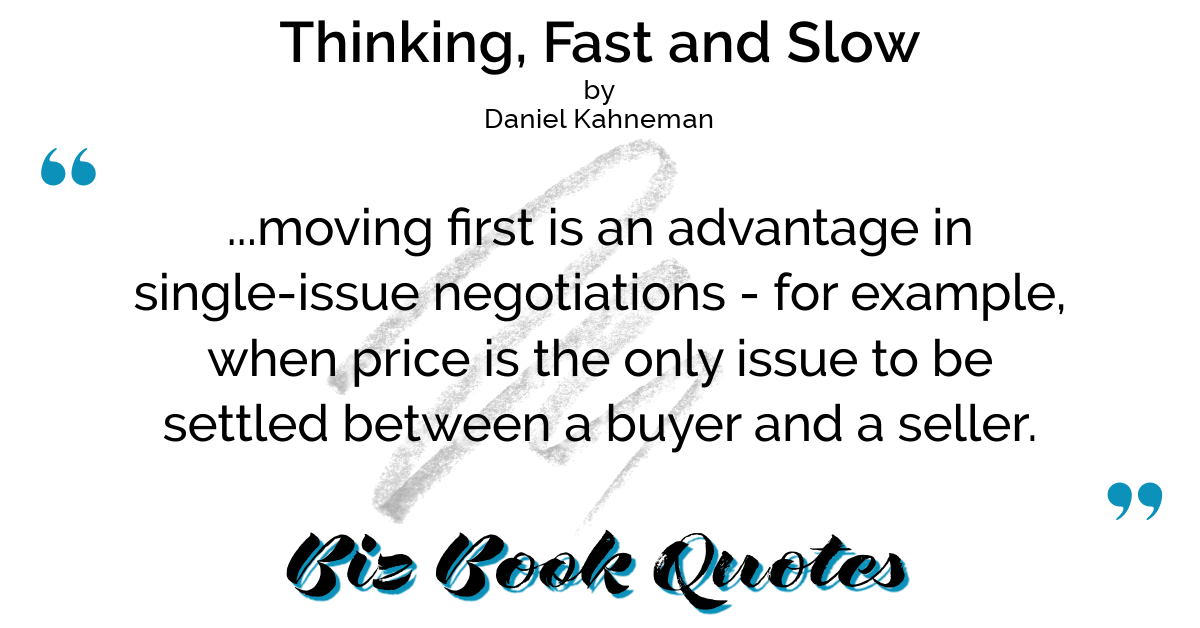
|
Thinking, Fast and Slow:
…moving first is an advantage in single-issue negotiations – for example, when price is the only issue to be settled between a buyer and a seller.
|
126 |
|
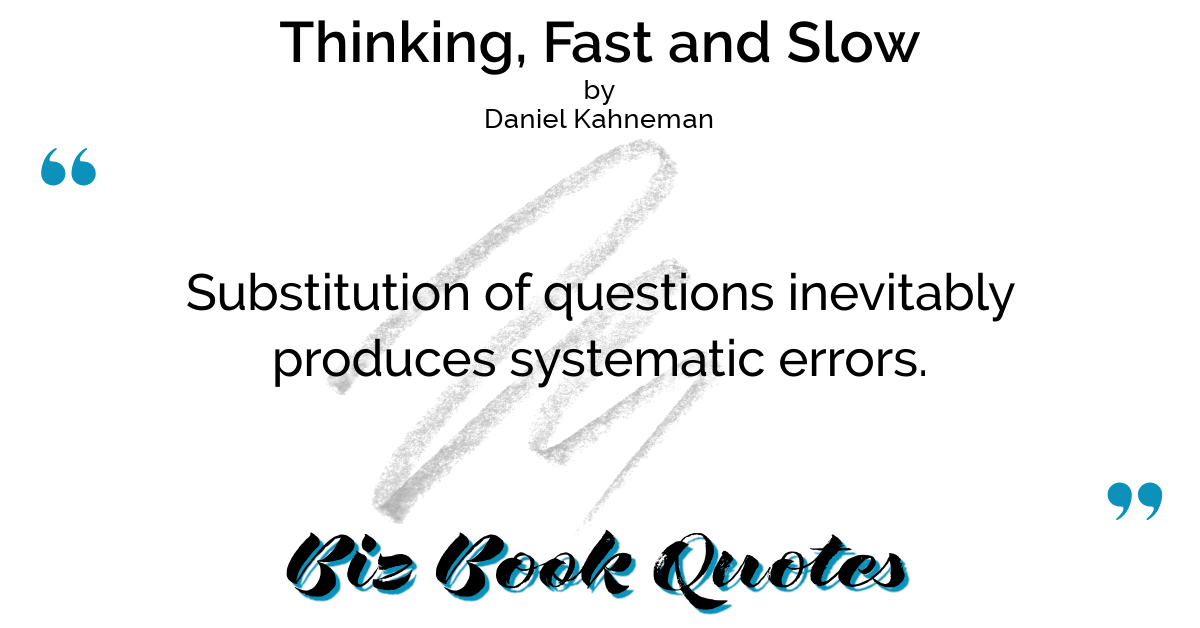
|
Thinking, Fast and Slow:
Substitution of questions inevitably produces systematic errors.
|
130 |
|
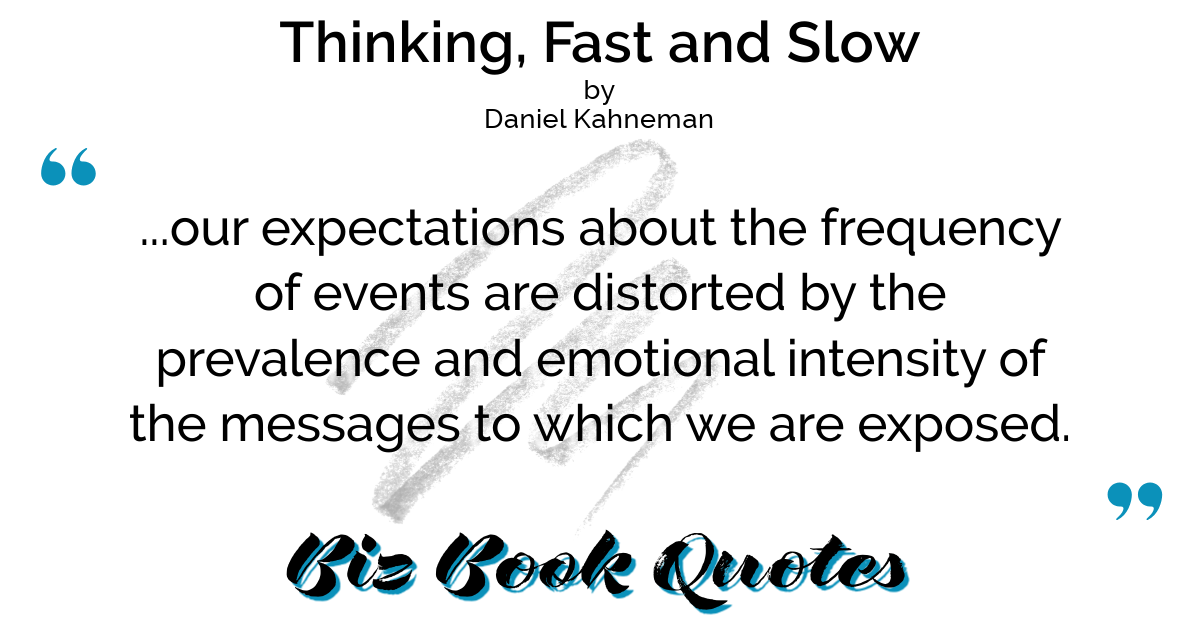
|
Thinking, Fast and Slow:
…our expectations about the frequency of events are distorted by the prevalence and emotional intensity of the messages to which we are exposed.
|
138 |
|

|
Thinking, Fast and Slow:
An inability to be guided by a ‘healthy fear’ of bad consequences is a disastrous flaw.
|
139 |
|

|
Thinking, Fast and Slow:
…the evaluation of the risk depends on the choice of a measure – with the obvious possibility that the choice may have been guided by a preference for one outcome or another.
|
141 |
|
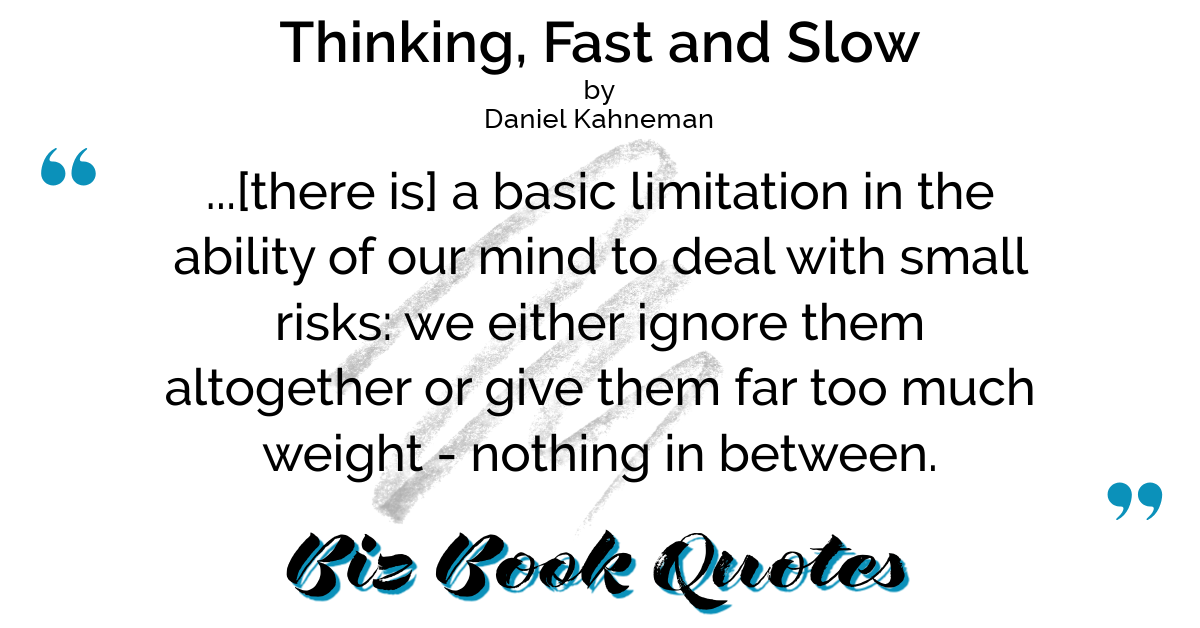
|
Thinking, Fast and Slow:
…[there is] a basic limitation in the ability of our mind to deal with small risks: we either ignore them altogether or give them far too much weight – nothing in between.
|
143 |
|
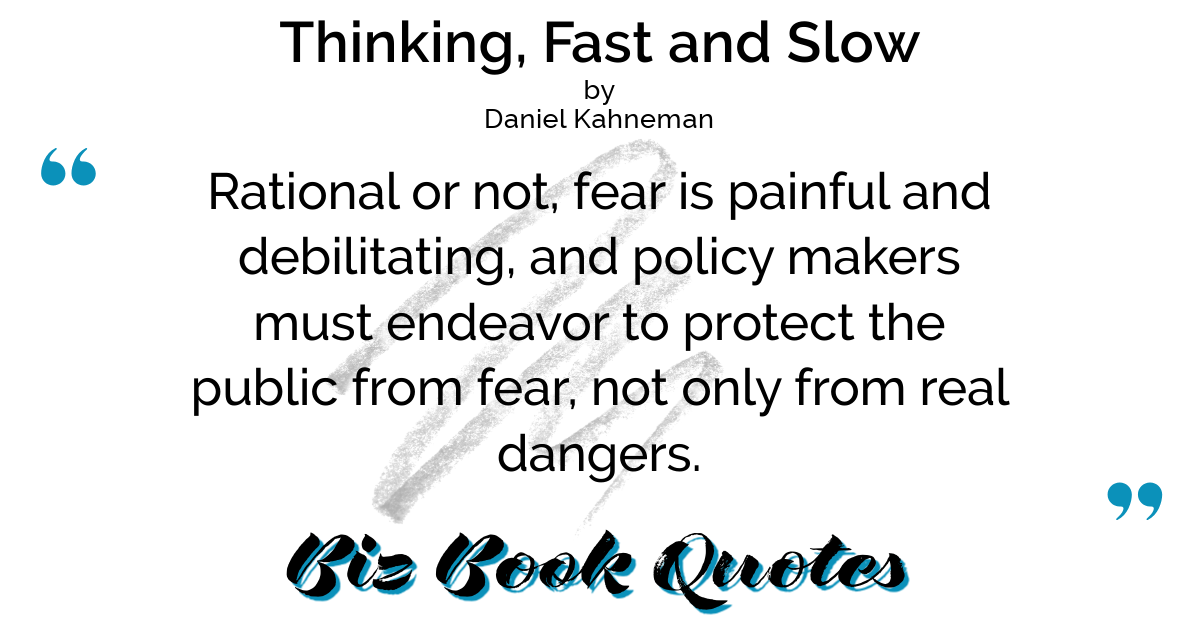
|
Thinking, Fast and Slow:
Rational or not, fear is painful and debilitating, and policy makers must endeavor to protect the public from fear, not only from real dangers.
|
144 |
